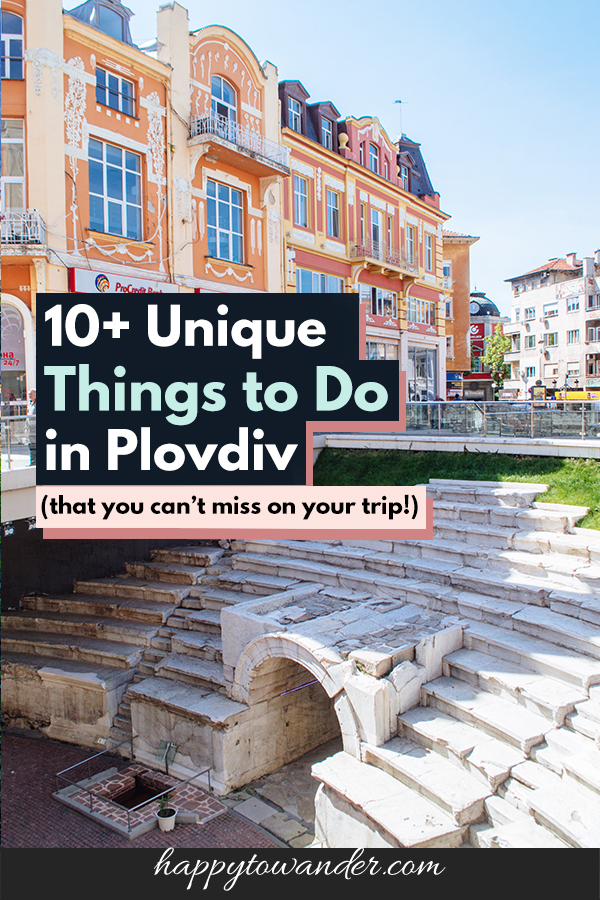*FYI - this post may contain affiliate links, which means we earn a commission at no extra cost to you if you purchase from them. Also, as an Amazon Associate I earn from qualifying purchases. Check out our Privacy Policy and Disclosure. for more info.
It’s a real shame, but the wonders of Plovdiv, Bulgaria’s 2nd largest city, are commonly lost on overseas visitors, many of which have never heard of it, let alone planned to visit.
And sure, Plovdiv may not have the name recognition enjoyed by the likes of London or Paris… but after years of dashing around European cities, I struggle to think of many that are this criminally underrated.
Plovdiv is a lot of things. A city built on Seven Hills, with glorious views all around. A historic powerhouse, where you can marvel at Roman ruins even inside the local H&M. A former European Capital of Culture, filled with great museums and restaurants. And, believe it or not – the oldest continually inhabited city in Europe, with a charming Old Town that feels like a true step back in time.
So, to briefly summarize my fanatical rant – there is a lot to do in Plovdiv, and in this post, I’ll be sharing the best: from epic ruins and architecture to museums and must-eats galore. I hope you find it helpful!
1. Wander around Old Town
As far as bragging rights go, one of Plovdiv’s most impressive accolades is its status as the oldest continually inhabited city on the continent.
With over 8000 years of history under its belt, Plovdiv has been shaped and transformed by the influence of countless groups over the years – Thracian, Roman, Byzantine, Ottoman – you name it… and the city’s stunning Old Town is where you can go to see this history come to life.
From striking ruins to intricate Bulgarian Revival-style houses (complete with adorably colourful facades and wooden balconies), the Old Town is filled with beautiful gems.
Some highlights include…
- Hisar Kapia: an ancient gate of the city’s fortifications dating back to the Roman period.
- St. Konstantin & Elena Church: An Orthodox church constructed in 337 on the remains of an older pagan temple, with a relatively modest exterior, but lovely interior
- Nedkovich House: A beautiful house from the 1860s that was once the home of a fabric merchant and is now open for visitors
- Balabanov House: Another gorgeous former merchant’s house that’s now preserved as a museum.
- Plovdiv Regional Ethnographic Museum: Housed in a stunning 19th-century mansion, showcasing traditional clothing, crafts, and artifacts.
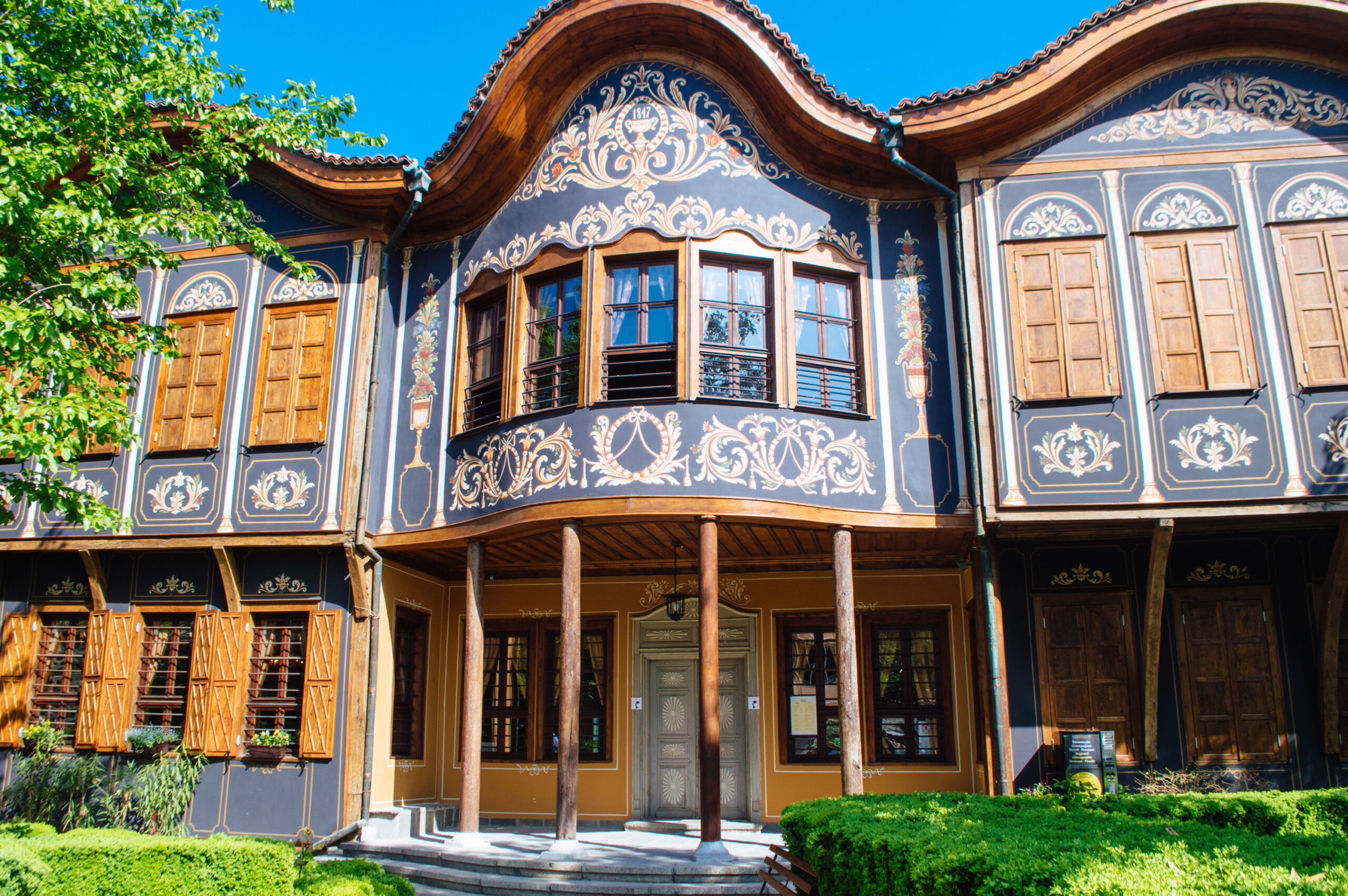
2. The Roman Theatre of Philippopolis
Next, let’s continue our little journey into the past with a visit to the 2nd century, when the Plovdiv’s Roman Theatre of Philippopolis was built.
Situated on the southern slope of the Nebet Tepe hill, this theatre once held an impressive capacity of over 6000, serving as a hub of entertainment and social gatherings for the citizens of Philippopolis, one of the most important cities in the Roman province of Thrace… as it continues to today!
Yes, that’s right, if you’re lucky, you can even catch a performance here. Though, do note that they only use it as an actual theatre during the summer months of June to September. You can see what’s on and purchase tickets here.
Or, you can grab a drink at Cafe Arena, which overlooks the theatre.

3. Nebet Tepe
While you’re in the neighbourhood, don’t forget to head up Nebet Tepe, one of Plovdiv’s seven hills, for panoramic views of the city.
From here, you can see over the Old Town area to one side and across the Maritsa River in the other direction. While the views and photo opportunities from here are the main drawcard, there’s also an archaeological site on top of the hill, where you can explore the ruins of the city’s former acropolis.
The walk up to the top of Nebet Tepe isn’t too difficult, although there are some steep uphill sections. If you need to restore yourself after your visit then the Rahat Tepe beer gardens at the foot of the hill is the perfect spot!
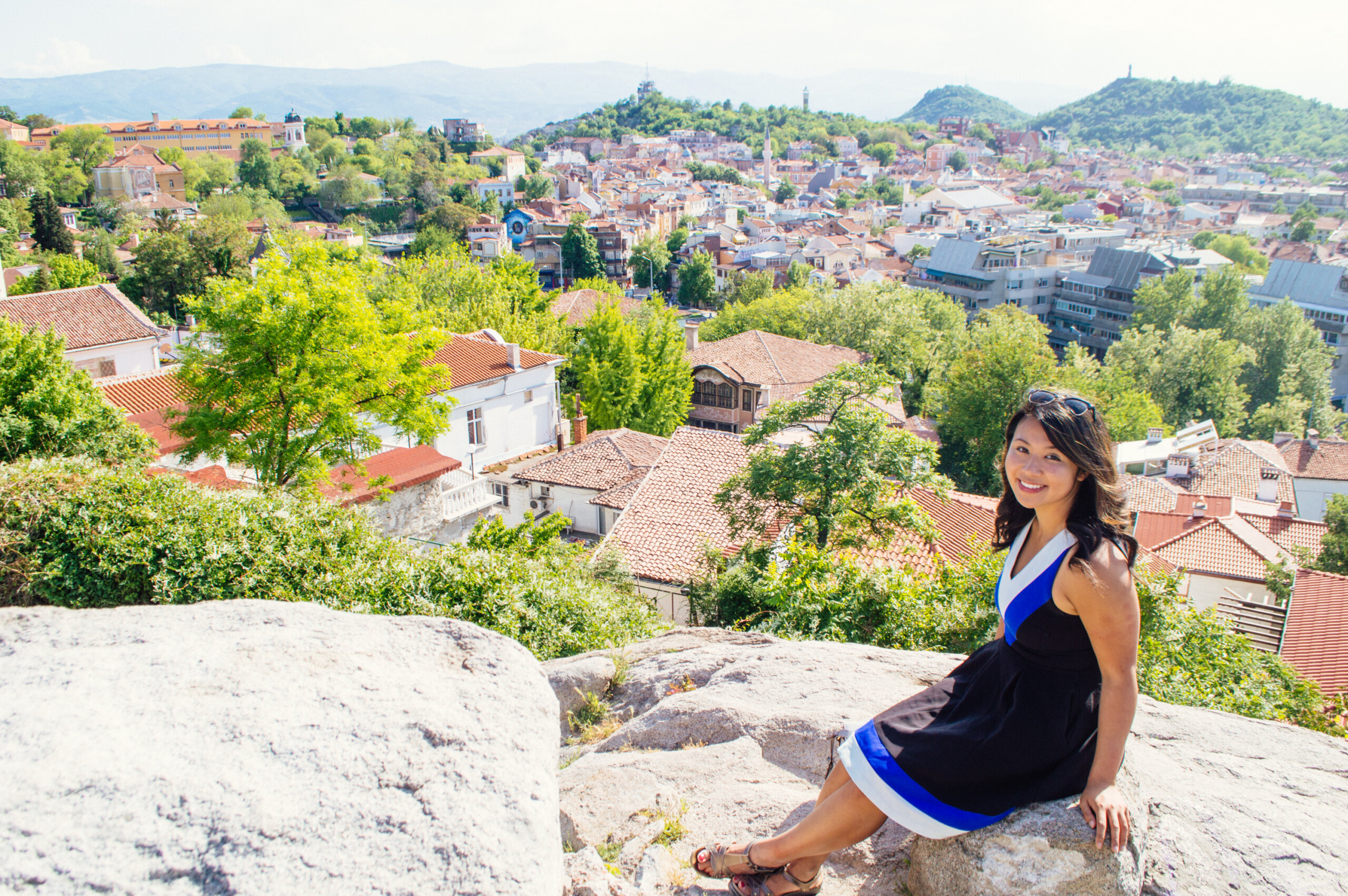
4. The Bishop’s Basilica of Philippopolis
Next, another Basilica – speciifcally the Bishop’s Basilica of Philippopolis.
While it looks fairly modern from outside, this museum building was actually constructed to protect the treasure hiding within: an ancient church that dates back to the 4th century AD.
This basilica is one of the largest early Christian churches discovered in Bulgaria, and it’s a real hidden gem. First discovered and excavated in the 1980s, archaeologists were able to find amazing mosaics throughout the ruin, particularly on the floors. These mosaics are just stunning with intricate geometric patterns, floral designs, and even images of birds and animals.
Today, visitors can wander along walkways that let you get a close-up view of sections of the mosaics without actually stepping on anything – a perfect way to see the different styles and learn more about the church’s history!
5. Tsar Simeon’s Garden
Nestled in the heart of the city, the Tsar Simeon Garden park is a lush and peaceful retreat from the urban hustle of the rest of Plovdiv.
Established in 1892 for the Plovdiv International Fair, the gardens were designed by the Swiss architect Lucien Chevallaz.
Named after Tsar Simeon I, a prominent ruler of the First Bulgarian Empire, they reflect a blend of European elegance and Bulgarian heritage. Nowadays, the gardens offer a serene escape for both locals and tourists. You can enjoy a leisurely stroll along the winding paths, relax on a bench or have a picnic under the trees.
One of the standout features is the magical Singing Fountain, a truly spectacular sight. The fountains, originally constructed in 1955, were renovated a few years back to include a modern light and sound show at night in summer that is a must-see while you’re in Plovdiv. NOTE: Timing for these shows do vary, so be sure to verify on official sources before you go!
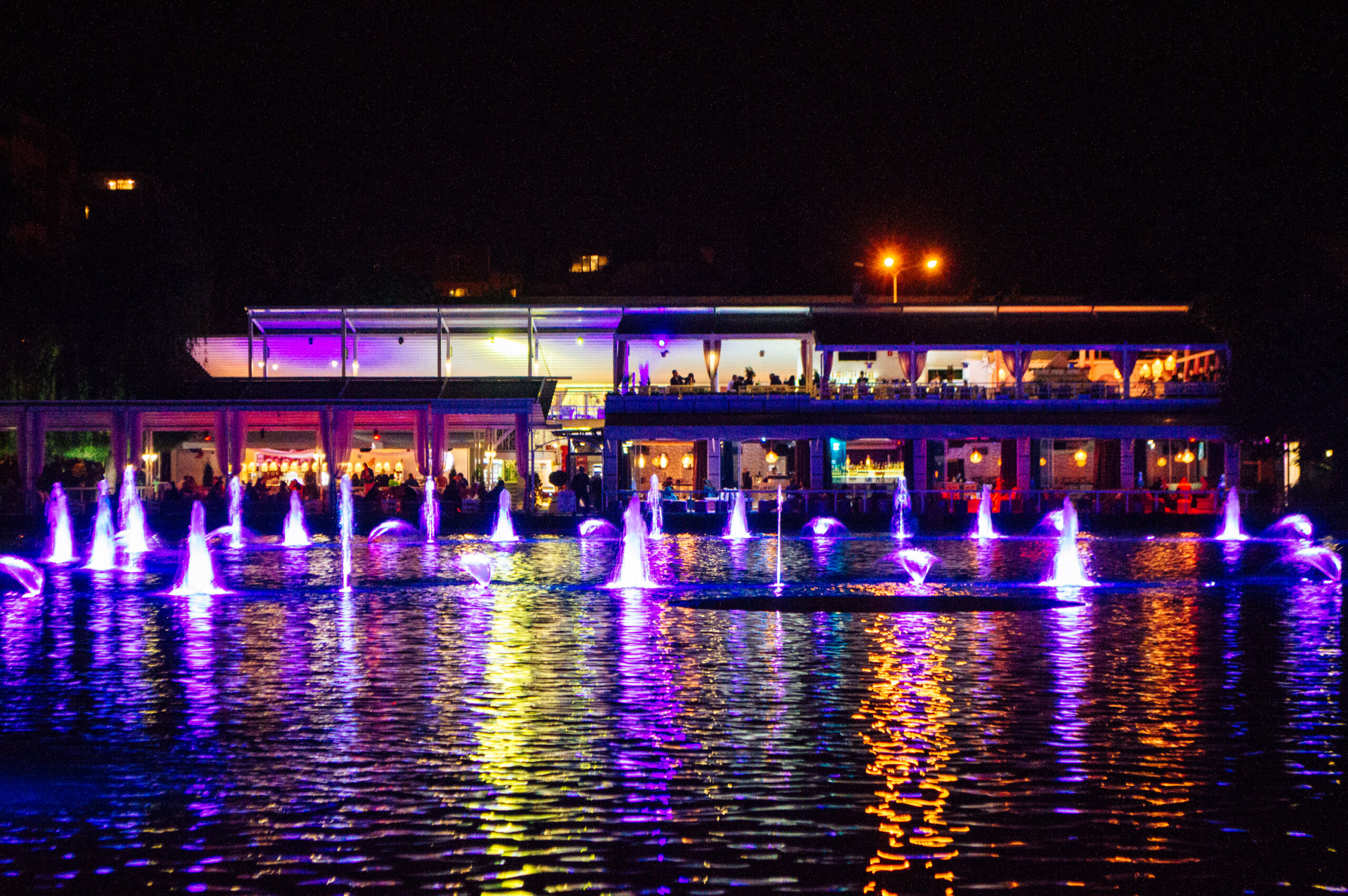
6. Roman Forum
Another highlight of Roman Plovdiv is the city’s old Forum, an excavated archaeological site where you can admire the remnants of the ancient city center.
Once upon a time, this ancient site was the political, administrative, and commercial heart of Philippopolis, the Roman name for Plovdiv. The forum covered an area of about 20 hectares and was surrounded by various important buildings, including the Odeon, which served as the city’s council house and later as a small theater. The forum also housed temples, public baths, and shops, making it a bustling hub of activity.
Excavation of the site began in the 1970s, revealing well-preserved ruins that give us a glimpse into the city’s vibrant past. Today, visitors can explore the remains of this ancient civic center and imagine the lively public life that once took place here.
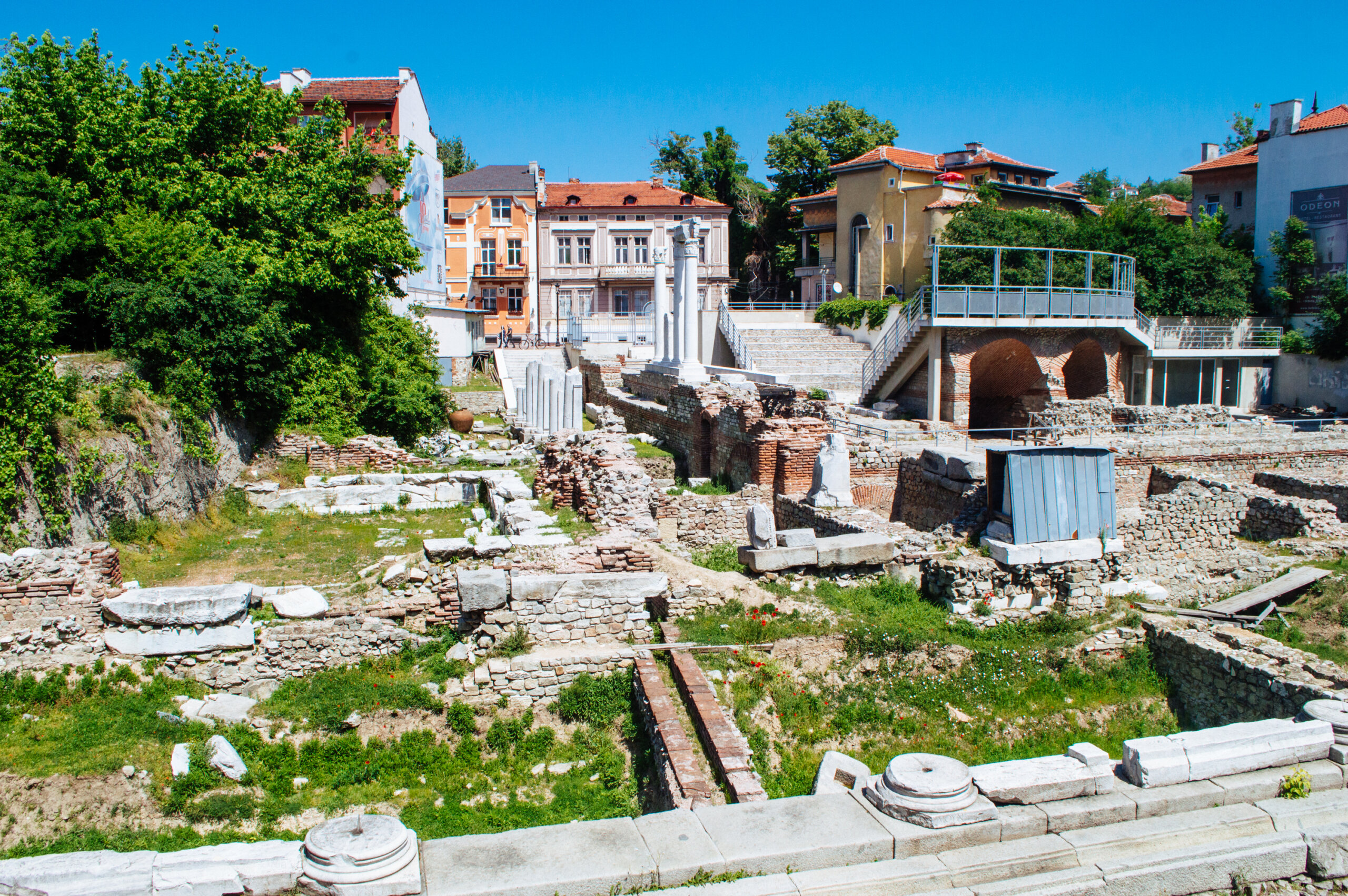
7. Walk Plovdiv’s ‘Main Street’
Plovdiv’s Main Street (which combines the streets ul. Knyaz Alexander I & ul. Rayko Daskalov) is a pedestrianized thoroughfare that ranks among the longest in Europe – spanning almost 2 kilometres from Stefan Stambolov Square to the Covered Bridge.
Along the way, you encounter some of Plovdiv’s most important sights, mixed in with hefty doses of retail therapy, cafes and restaurants. Though the selection of shops along this stretch aren’t the most exciting, the opportunities for people watching and sightseeing are excellent.
The journey starts at the city’s lively main square, with its Kopchetata (Buttons) Fountain, but I’ll share some more highlights below!
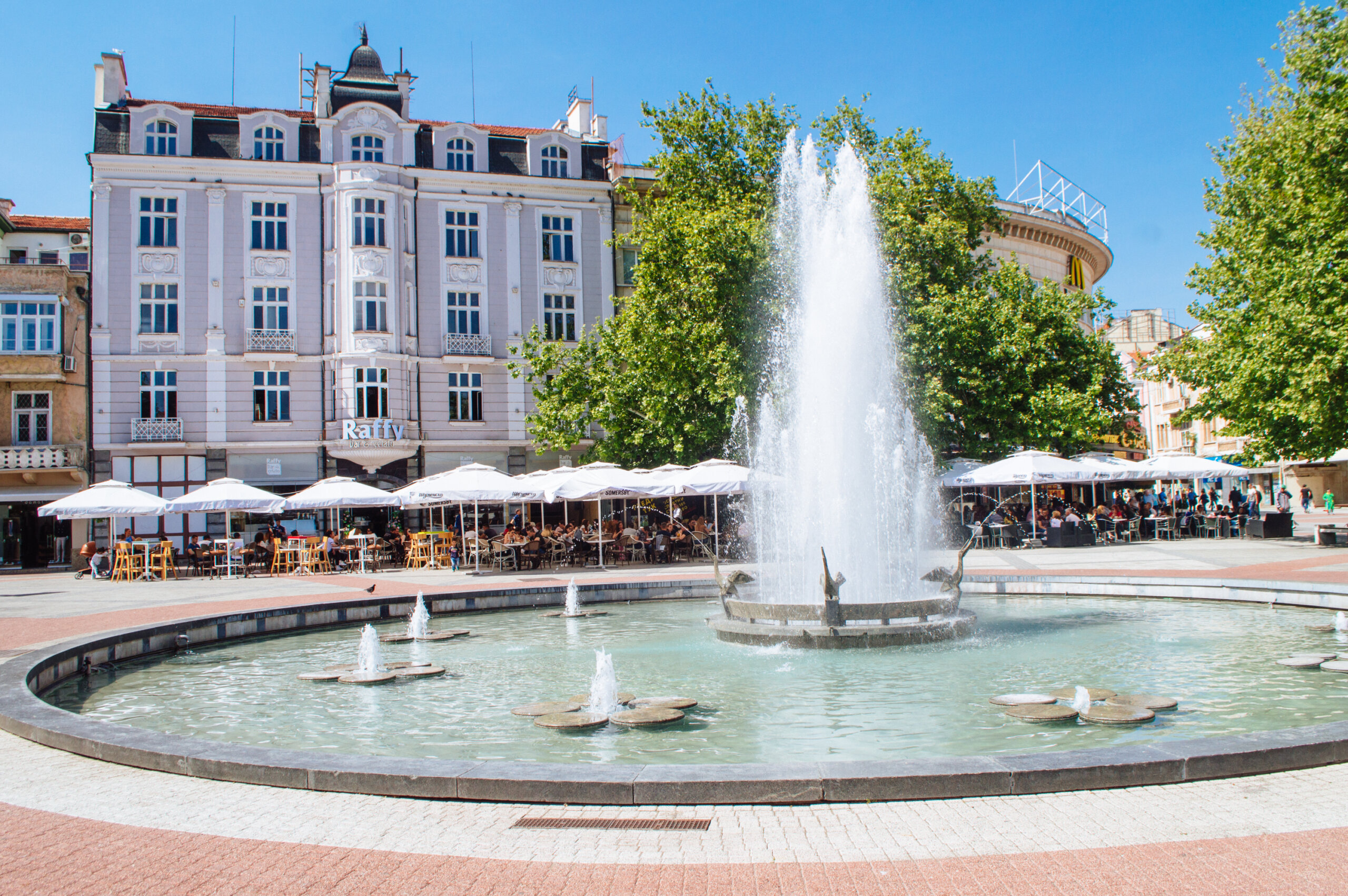
8. Dzhumaya Mosque
The Dzhumaya Mosque, also written as Djumaya Mosque, is a prominent historical and architectural landmark in Plovdiv, located right by the Ancient Stadium of Philippopolis.
Located in the city centre, it stands on the site of an earlier Christian cathedral and was constructed during the reign of Sultan Murad II in the mid-14th century, following the Ottoman conquest of Plovdiv. This mosque is one of the oldest and largest Ottoman structures in Bulgaria. It features a striking exterior with red brick and white stone, as well as a beautiful minaret that dominates the skyline. The interior is equally impressive, with intricate floral and geometric patterns adorning the walls and ceiling.
The Dzhumaya Mosque remains an active place of worship for Plovdiv’s Muslim community but it’s also open to visitors who wish to appreciate its historical and cultural significance. There’s also a very good Turkish café next door that’s perfect for a coffee break before or after visiting the mosque.

9. The Ancient Stadium of Philippopolis
One of my favourite things about this street is that it’s built over a literal Roman stadium.
… and you’ll encounter quick proof of that as you explore, thanks to the fact that portions of the stadium are open and preserved for you to ogle.
Once upon a time, the Ancient Stadium of Philippopolis would have been used for athletic competitions and gladiatorial games, with space for around 30,000 spectators. Built in the 2nd century AD during the reign of Emperor Hadrian, today visitors can see the original seating, track, and some of the impressive architectural details.
At night parts of it are illuminated with coloured lights, and you can also look at sections of it by going downstairs to literally see it underground. During the Christmas period it’s even decorated with festive figurines!
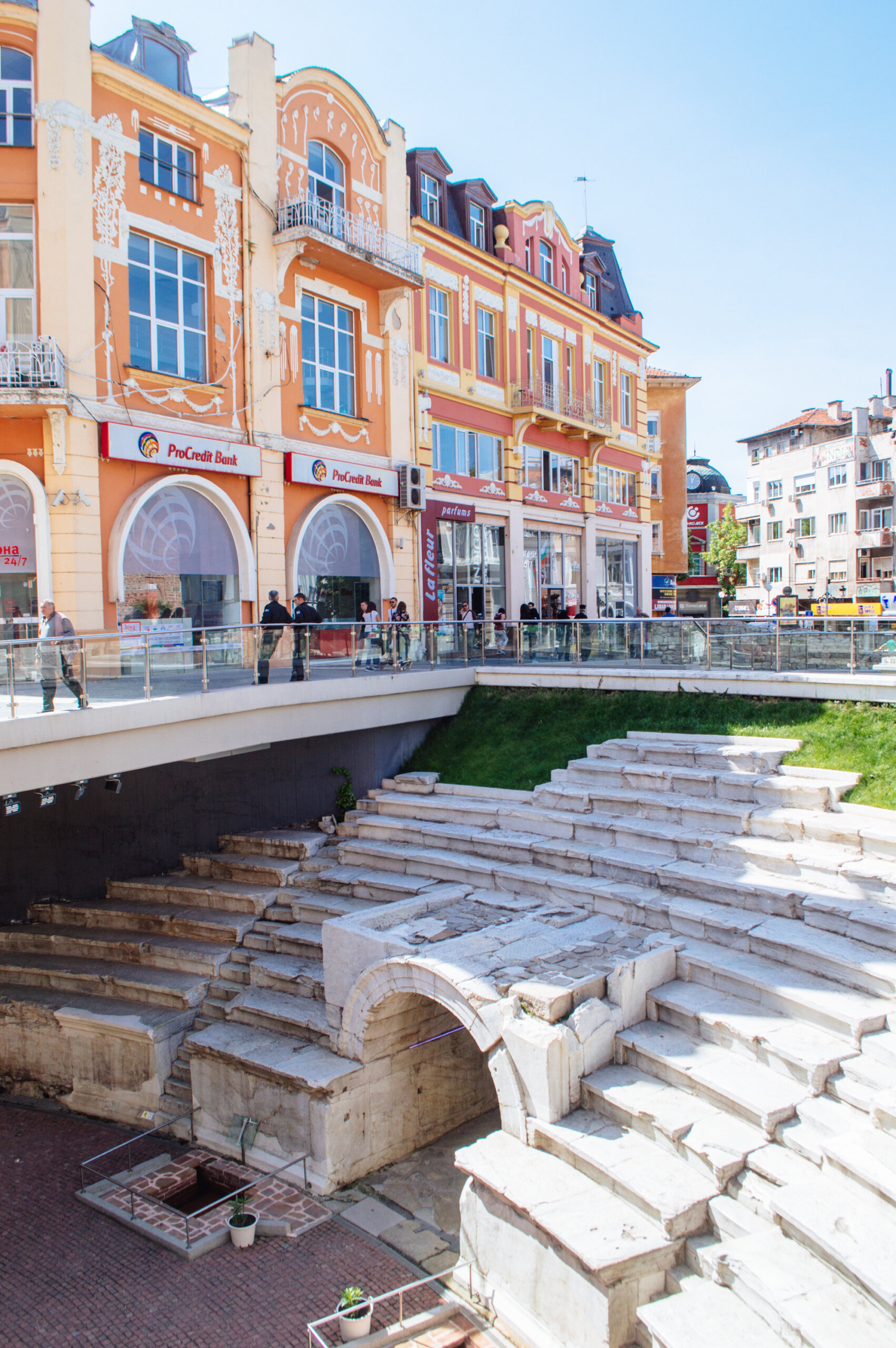
10. Scope out ruins in an H&M
Along this street is another one of my favourite Plovdiv eccentricities – the fact that you can see some of the Roman stadium ruins in an H&M. Head down to the basement to observe this quirk amidst the sea of blouses and floral prints.
Apparently you can also see some of the ruins in the Excelsior Shopping Mall directly across the road, but I haven’t been able to confirm that.
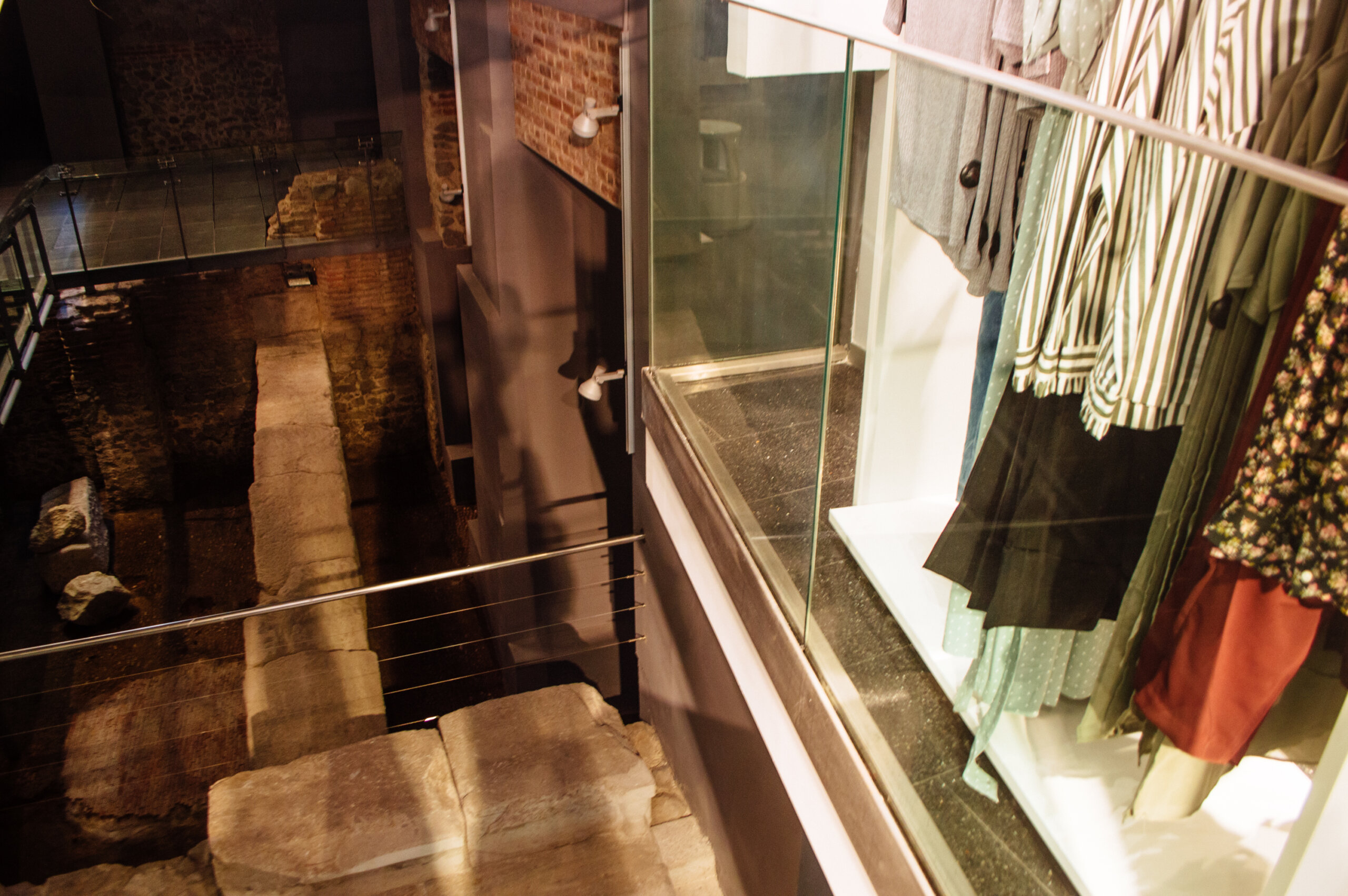
11. Say hi to Milyo the Crazy
Don’t worry, before you assume I’m sending you off on a weird side quest, I’m talking about a statue.
Despite the negative-sounding nickname, Milyo the Crazy (real name: Mihail Dimitrov Todorov) was actually a harmless local figure and fixture of Plovdiv’s Main Street once upon a time.
Best known for his playful demeanour, which endeared him to many in spite of his mental illness, Milyo became a bit of a local legend, immortalized in spicy rumours, paintings, and now, his own bronze statue that’s among one of the most photographed sights in the city!
Today, it is said that any wishes you whisper in his ear will come true. So, add that to ye olde Plovdiv bucket list.

12. Feast on Bulgarian dishes
Next on our list of must-dos: gorge on Bulgarian cuisine until you need to buy stretchy pants!
As someone who loves hearty dishes, Bulgarian food is a true delight. So, needless to say, I believe one of the best things to do in Plovdiv is eating as much of it is possible.
Some popular dishes to put on your list include…
- Shopska Salad: A refreshing and colourful salad made with tomatoes, cucumbers, onions, and peppers, topped with grated cheese and dressed with olive oil and vinegar
- Banitsa: A traditional Bulgarian pastry made with layers of thin filo dough filled with a mixture of whisked eggs, feta cheese, and sometimes spinach or leeks – a great breakfast or snack!
- Tarator: A chilled yogurt soup made with cucumbers, garlic, dill, and walnuts, seasoned with salt and sometimes garnished with a drizzle of olive oil
- Kebapche: Grilled minced meat sausages made with a mixture of ground beef or pork, onions, and spices like cumin and paprika; typically served with a side of fresh bread or fries
- Kavarma: A hearty, slow-cooked stew made with chunks of pork or chicken, onions, peppers, tomatoes, and mushrooms, seasoned with paprika, garlic, and herbs; often served with rice or potatoes
My most memorable meal was at Rahat Tepe, a beer garden with a great view, affordable prices, and massive portions. Their specialty? “Sach” dishes, mounds of meat and veggies cooked and served in heavy clay pans. Bring friends to share – you’re going to need the reinforcements.
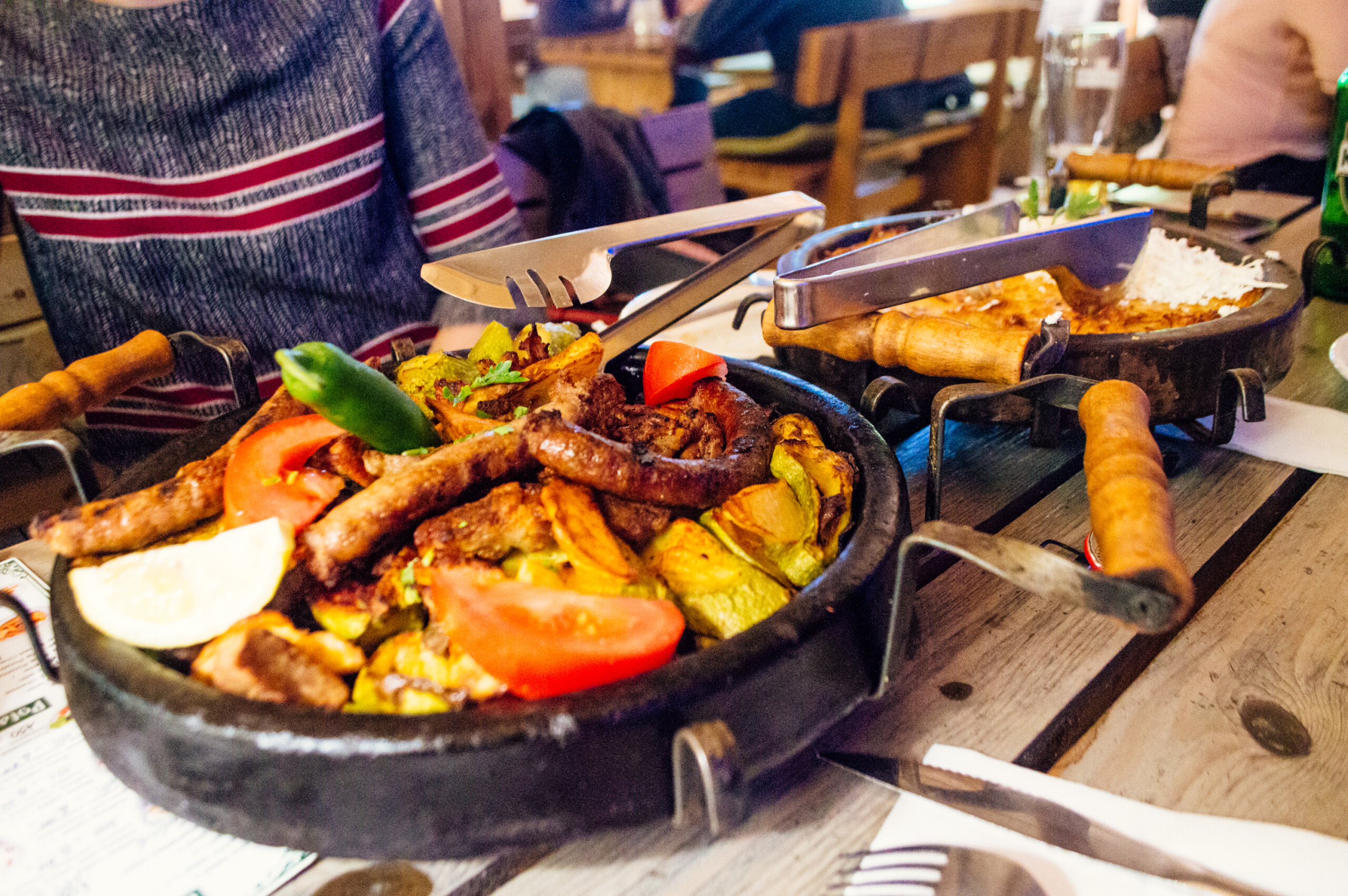
13. Visit the Kapana Quarter
The Kapana Quarter in Plovdiv, often referred to as “The Trap,” is a vibrant creative district known for its artistic atmosphere – and it’s well worth spending some time exploring in spite of its mildly concerning name.
Historically, this area was a bustling market district during the Ottoman period, with narrow, winding streets filled with craftsmen and traders. Today, Kapana has been revitalized into a trendy neighborhood, attracting artists, musicians, and entrepreneurs. It’s packed with quirky cafes, art galleries, boutique shops, and street art, plus the area hosts numerous cultural events, festivals, and markets throughout the year.
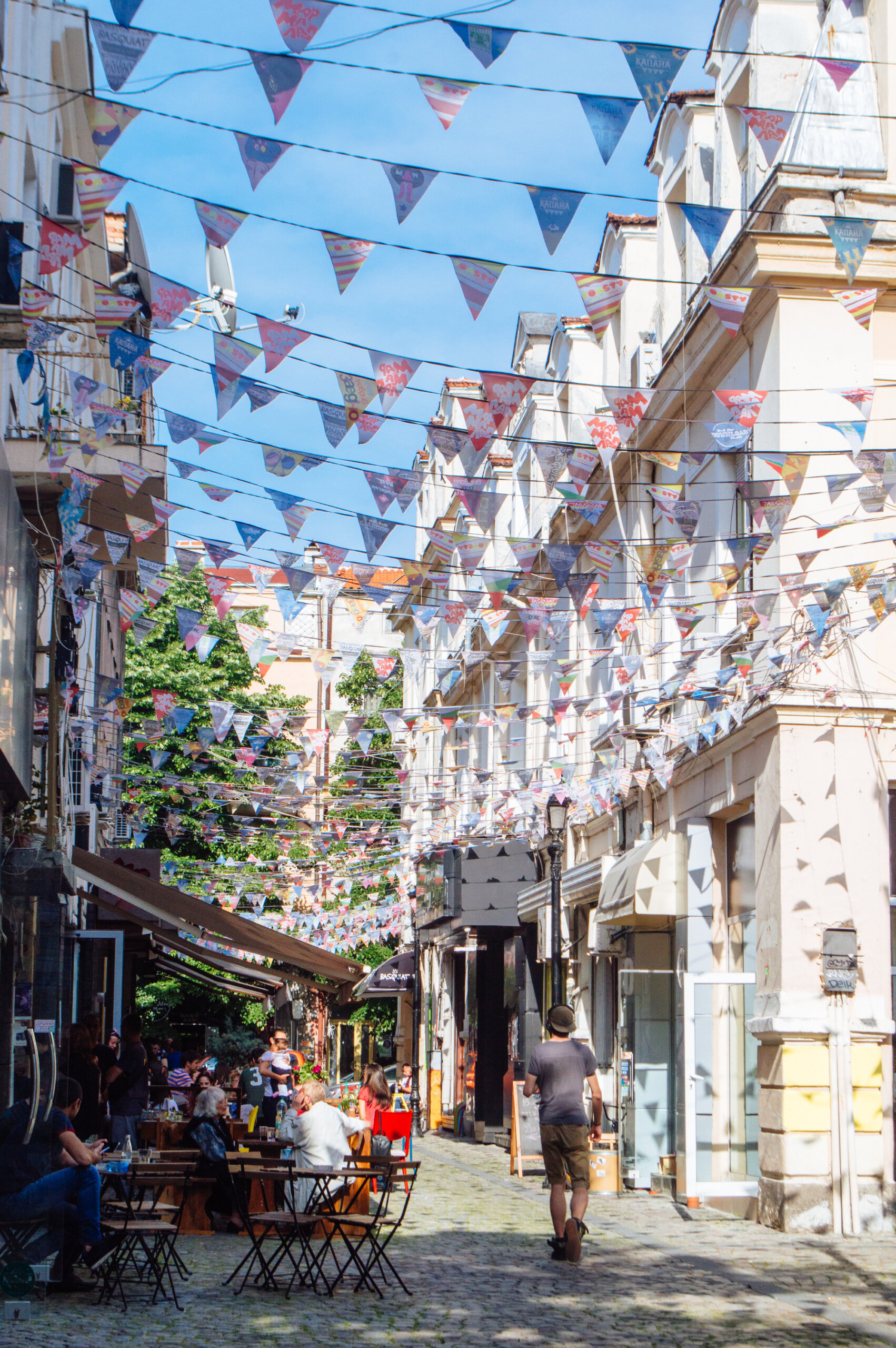
14. Plovdiv’s Regional Historical Museum
Keen to dive more into the history of the city?
Besides the fact that you can see pieces of old Plovdiv everywhere you go, another spot to admire important artifacts and relics is the city’s Regional Historical Museum, home to an impressive collection of items housed in four main exhibitions throughout the city:
- The Bulgarian National Revival in the Georgiadi House – looks at the history of Plovdiv during the Ottoman period
- The Unification of Bulgaria in the former building of the Eastern Rumelian Regional Assembly – looks at the the Serbo-Bulgarian War and the Unification of the Principality of Bulgaria and East Rumelia
- Book publishing in Bulgaria in the Hristo Danov House – looks at Plovdiv’s role at the centre of Bulgarian publishing during the Bulgarian National Revival
- The Museum Centre of Modern History – hosts temporary art exhibitions along with seminars and other public events
15. Admire Plovdiv Street Art
And if you’re looking for more alternative things to do in Plovdiv, I can highly recommend going on a mural hunt! There’s tons of great street art to admire in Plovdiv.
Some of the most popular spots for it include…
- The Core – Kapana: There’s street art all over the Kapana neighbourhood, but one of the best spots to see it is the little square known as The Core, which is also where events are often held surrounded by the cool murals.
- Behind “N. O. Masalitinov” Plovdiv Drama Theatre: The street behind Plovdiv’s Drama Theatre is covered in beautiful street art.
- The Underpass by the “Chifte” Ottoman Baths: There’s an underpass that goes under the road near these old Ottoman baths that’s also been covered in murals, and there’s a cool little thrift store at the opposite opening from the baths that you might like to check out while you’re there.
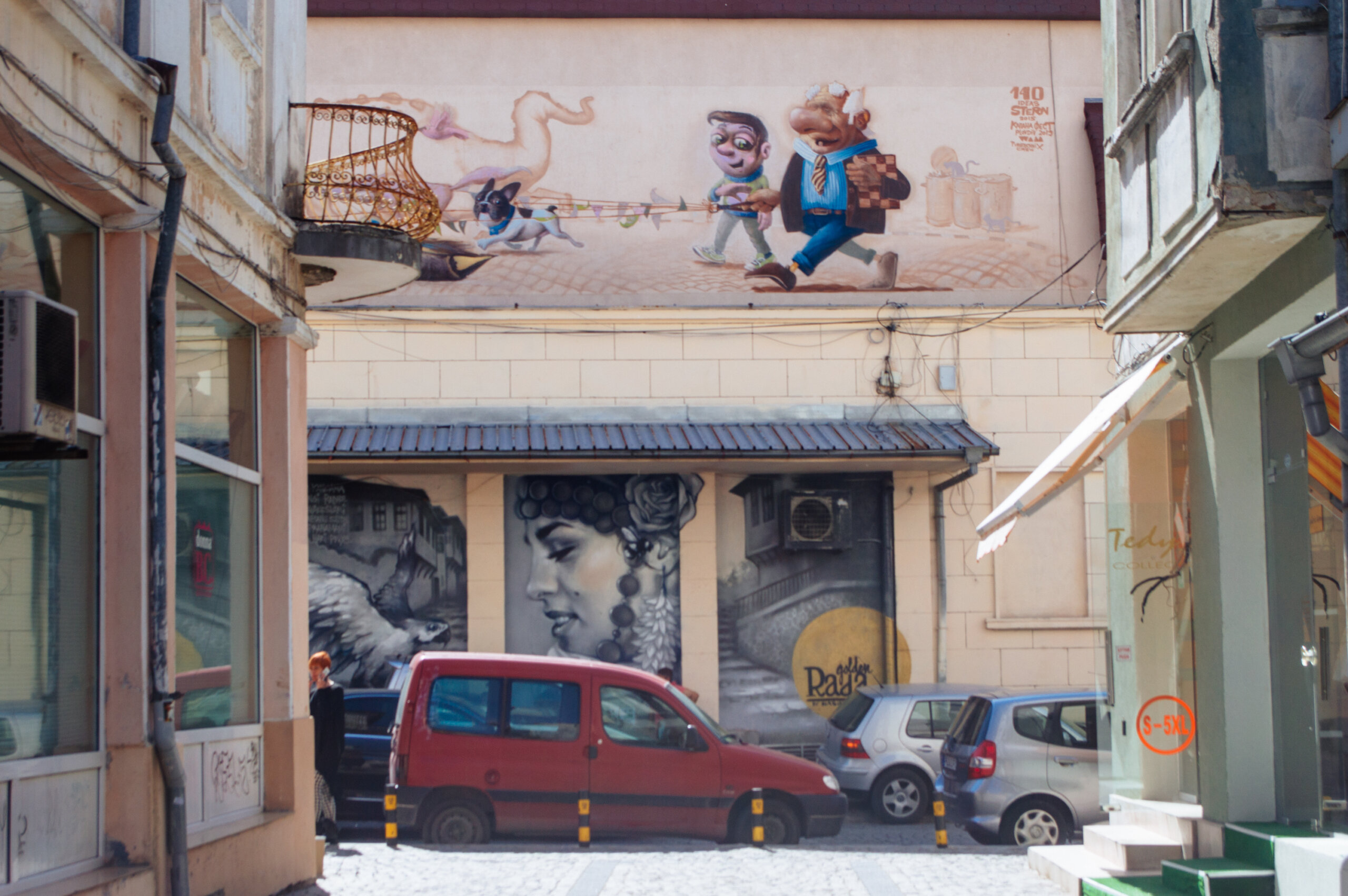
16. Visit an art gallery or museum
Or, for a more conventional approach to art, be sure to visit one of Plovdiv’s many art galleries. They didn’t make this city a European capital of culture for nothing, after all!
Here are some of the most popular art museums and galleries in the city:
- Art Gallery Philippopolis: a space dedicated to showcasing the works of local artists. It’s a fantastic opportunity to immerse yourself in Bulgaria’s modern art scene.
- Zlatyu Boyadzhiev Permanent Exhibition: This museum/art gallery contains the largest collection of paintings by Bulgarian artist Zlatyu Boyadziev. His artworks are divided into two main periods from before and after he suffered a stroke and his style changed markedly when he had to paint with his other hand – his works are really interesting, often featuring Plovdiv as the subject.
- Pharmacy Museum Hippocrates: A unique 19th century pharmacy museum in the former home of one of the first persons with a medical degree in Plovdiv.
- Regional Archaeological Museum: A museum all about Plovdiv’s early history, with more than 100,000 items and objects on display.
17. Alyosha Monument
Though a bit outside the city centre, and a little bit controversial for obvious reasons, seeing the imposing Alyosha Monument is another interesting Plovdiv landmark for those with some extra time.
This colossal statue of a Soviet soldier overlooking Plovdiv is a relic of WWII, commemorating the Soviet soldiers who died in the liberation of Bulgaria from Nazi forces. Interestingly the Soviets apparently didn’t have any casualties on Bulgarian land apart from some soldiers who died from methyl alcohol poisoning, so it’s more a piece of propaganda than anything else.
Still, the statue itself is quite imposing, standing at about 11 meters (36 feet) tall, and depicting a soldier holding a rifle, gazing out over the city. The name “Alyosha” comes from a popular Russian song about a young soldier, which became associated with the monument over time.
The site also provides a fantastic panoramic view of Plovdiv. Many locals and tourists alike visit the hill for a leisurely walk to take in the scenery, so definitely consider putting it on your list!

BONUS: Day Trip to Bachkovo Monastery
Finally, it’s worth noting that Plovdiv is a great base for many day trips, the most popular one being to Bachkovo Monastery, one of Bulgaria’s oldest and most beautiful monastic complexes.
Founded in 1083 by Georgian monks, this monastery has survived through various historical periods, including the Byzantine, Bulgarian, and Ottoman eras, which is reflected in its diverse architectural styles. The main church, built in the early 17th century, houses beautiful frescoes and icons, including a 14th-century icon of the Virgin Mary which is believed to have miraculous powers..
The monastery is located about a 40-minute drive outside the city of Plovdiv and you will need to drive as there’s no public transport links there. You could, however, book a day trip that also explores King Ivan Asen’s 13th-century fortress along with the monastery.
Did I miss any of your favourite things to do in Plovdiv?
Let me know in the comments so I can add more of the best Plovdiv activities to the list. Happy and safe travels! 🙂

